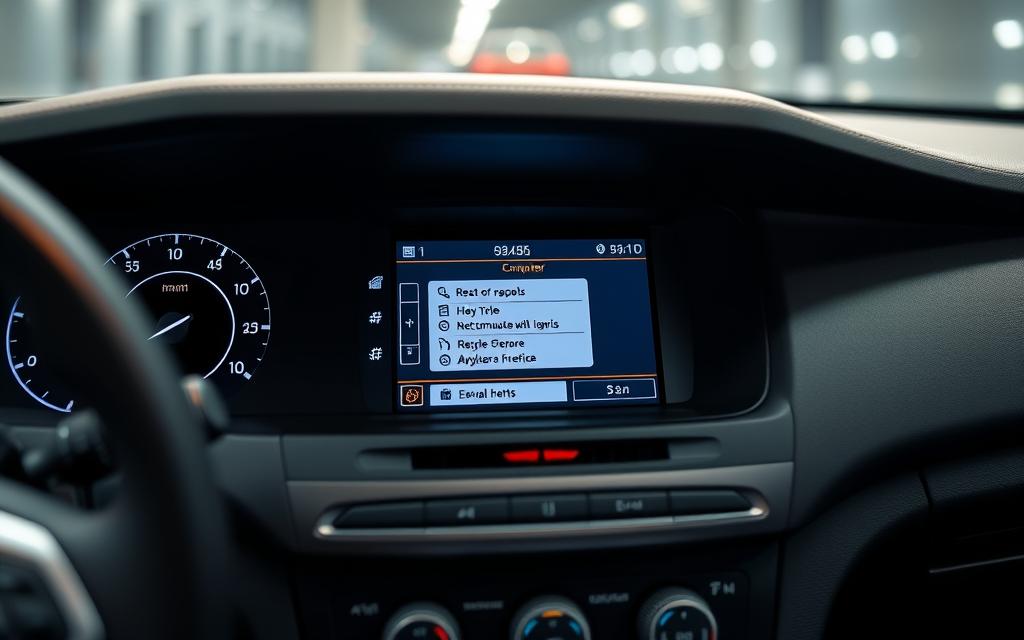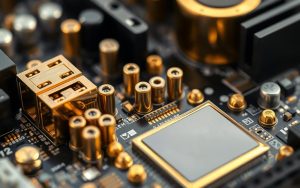Table of Contents
Modern vehicles rely on advanced ECU systems to manage performance, much like a home computer. These systems store temporary data and settings that may need clearing for optimal operation.
When issues arise, disconnecting the power source helps wipe stored errors. Residual electricity can linger in circuits, so timing matters. Most mechanics recommend a brief period to ensure a full reset.
Several factors influence the process, including vehicle age and battery condition. Newer models with complex electronics may behave differently than older ones. Always prioritize safety before handling electrical components.
Understanding your car’s needs ensures proper maintenance. This guide explains the essentials for refreshing your vehicle’s electronic systems effectively.
Understanding Your Car’s Engine Control Unit (ECU)
The brain behind your vehicle’s performance lies in its Engine Control Unit. This compact module governs everything from fuel efficiency to emission controls. Without it, modern engines wouldn’t deliver the precision drivers expect.
What Does the ECU Do?
Think of the ECU as a traffic cop for your engine. It processes data from sensors to adjust air-fuel ratios, idle speed, and even transmission shift points. Key responsibilities include:
- Monitoring oxygen sensors to optimize combustion
- Controlling emissions to meet environmental standards
- Storing temporary settings like throttle response
How the ECU Interacts with Your Battery
The system relies on steady power from the battery to retain volatile memory. Sudden voltage drops can erase adaptive data, forcing the ECU to relearn driving patterns. Two memory types matter:
- Volatile: Loses data when power disconnects (e.g., error codes)
- Non-volatile: Retains critical settings like anti-theft codes
For example, a weak battery might cause rough idling until the ECU recalibrates.
What Happens When You Disconnect the Battery?
Your vehicle’s electrical system reacts instantly when power is cut. Temporary data like trip logs and radio presets vanish immediately. The clock resets, and some features enter a default state until power returns.
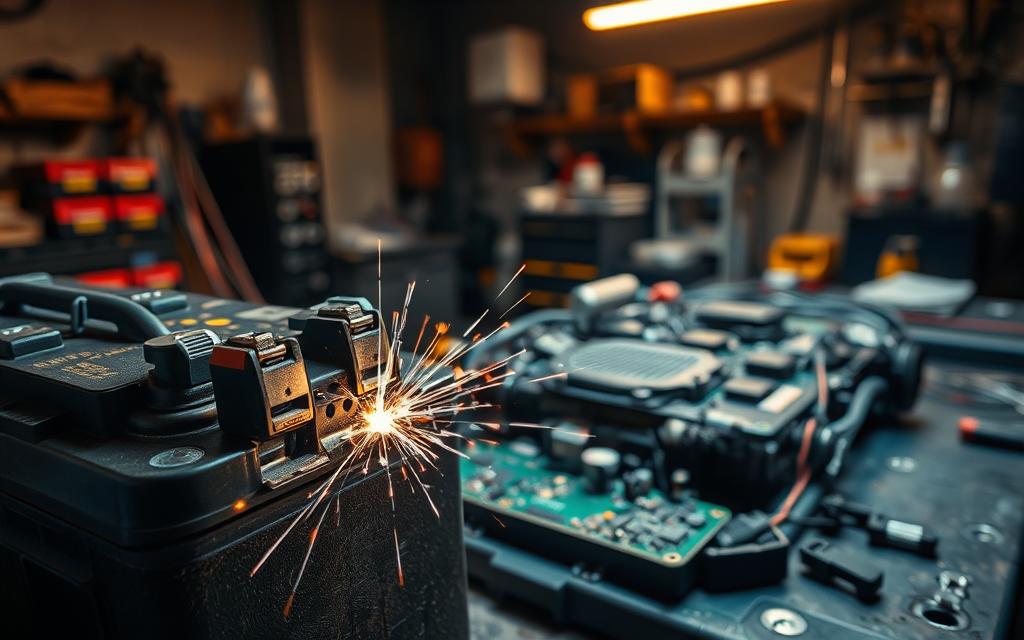
Short-Term vs. Long-Term Disconnection Effects
A brief interruption (under 30 minutes) might save settings. Extended periods force systems to reboot entirely. Forum discussions reveal varied experiences—some drivers achieve a full reset in 15 minutes, while others wait 2 hours.
Anti-theft systems may trigger alarms if power is restored abruptly. Always check your owner’s manual for model-specific behaviors.
Residual Power and ECU Memory
Capacitors retain residual power briefly after disconnection. This energy keeps volatile memory alive, delaying a full reset. For a complete wipe, ensure the battery stays disconnected long enough to drain all stored charge.
Long-term disconnections risk terminal corrosion. The ECU may also need recalibration when reconnected, affecting idle smoothness or fuel trims.
How Long to Leave Battery Disconnected to Reset Car Computer
Timing matters when clearing your vehicle’s electronic memory. Residual power in capacitors can delay a full reset, so disconnection intervals vary.
Minimum Reset Timeframe
Most systems require at least 15 minutes to drain residual energy. Older models may need 30 minutes or longer. Forum discussions reveal exceptions—like a 1998 BMW needing 2 hours.
Key Influencing Factors
Three elements impact reset duration:
- Ambient temperature: Cold slows capacitor discharge.
- ECU design: Hybrids often retain data longer.
- Diagnostic codes: Persistent errors may require OBD-II tools.
Manufacturer manuals sometimes underestimate real-world needs. For complex issues, extended disconnections ensure cleaner reboots.
Step-by-Step Guide to Safely Disconnect Your Battery
Safety should always come first when dealing with automotive electronics. A methodical approach ensures you avoid short circuits or accidental damage. This guide walks you through the entire procedure, from preparation to reconnection.
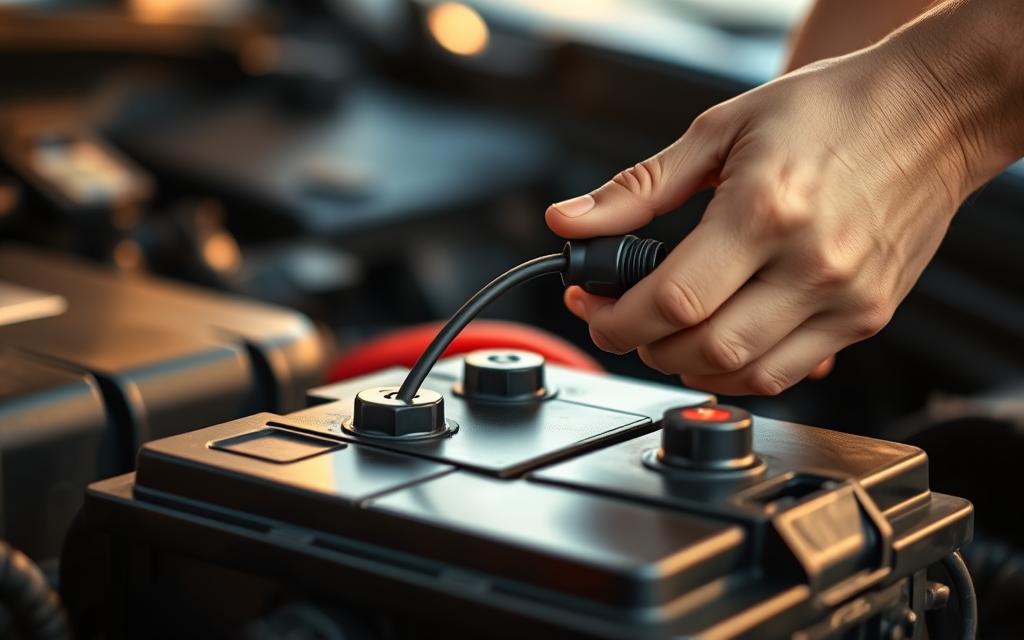
Safety Precautions and Equipment
Before touching the battery cable, gather protective gear. Insulated gloves and goggles shield against sparks or acid spills. Ensure your workspace is dry and well-ventilated.
Essential equipment includes:
- Socket wrench set (10mm–13mm, typically)
- Anti-corrosion spray for terminals
- Memory saver device (optional, for preset retention)
“Always remove the negative terminal first—it minimizes electrical hazards.”
Disconnecting and Reconnecting the Battery
Start by locating the driver side terminal. Loosen the negative battery cable clamp with your wrench. Gently lift it away to prevent contact with the terminal.
After 15+ minutes, reconnect the positive terminal first. Tighten clamps securely and apply anti-corrosion spray. Check for warning lights or system recalibration needs post-reconnection.
Note: Luxury models with dual batteries may require additional steps. Consult your manual for specifics.
Implications of Resetting Your ECU
Resetting your vehicle’s ECU triggers a chain reaction in its electronic system. Temporary performance quirks often appear until the module relearns your driving patterns. This transition period varies by make and model.
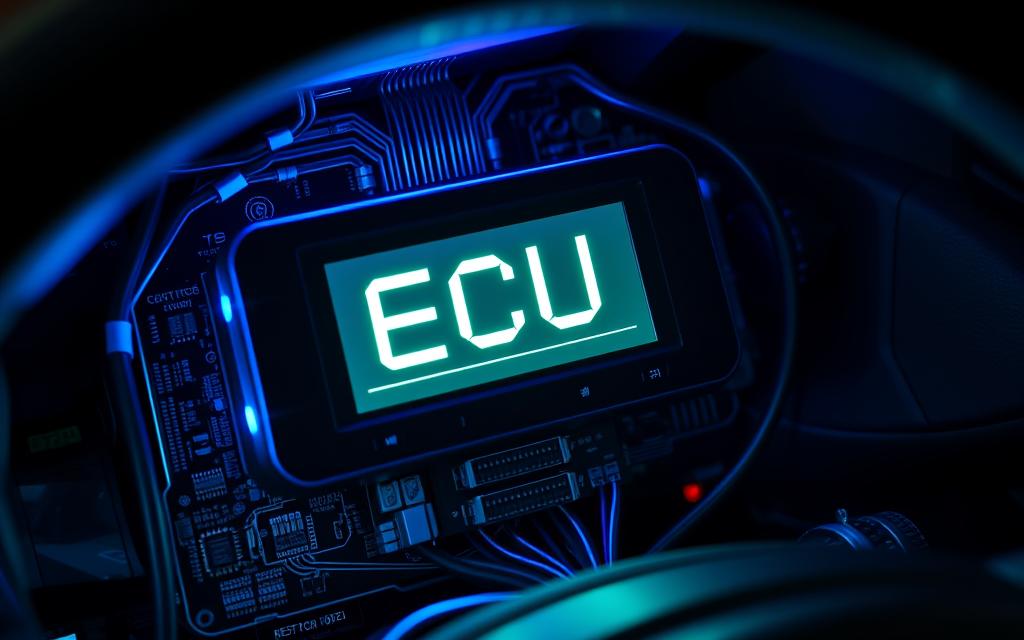
Effects on Performance and Settings
Expect these common changes immediately after reset:
- Erratic shifting: Transmission may hesitate until adaptive settings rebuild
- Check engine light: Sometimes clears temporarily before reappearing
- Reduced fuel efficiency: The system defaults to conservative fuel maps
Most vehicles need 30-45 minutes of mixed driving (city/highway) to recalibrate. During this period, the ECU analyzes throttle response and oxygen sensor data.
How the ECU Relearns After a Reset
The module rebuilds its database through sensor feedback. Critical recalibration phases include:
- Idle air control relearning (first 10-15 minutes)
- Fuel trim adjustments (varies by driving conditions)
- Emission codes verification (completes readiness monitors)
“Post-reset roughness usually resolves within three drive cycles. Persistent issues suggest deeper problems.”
For major repairs like transmission swaps, professional recalibration ensures proper adaptation. Emission testing may fail until all OBD-II monitors reset—typically 50-100 miles of driving.
Note: Some luxury models store settings in non-volatile memory. Always verify check engine codes post-reset with a scan tool.
Alternative Methods to Reset Your ECU
Several reliable techniques exist for clearing your vehicle’s memory without removing cables. Modern diagnostics equipment and manufacturer shortcuts provide faster solutions than traditional battery disconnection.
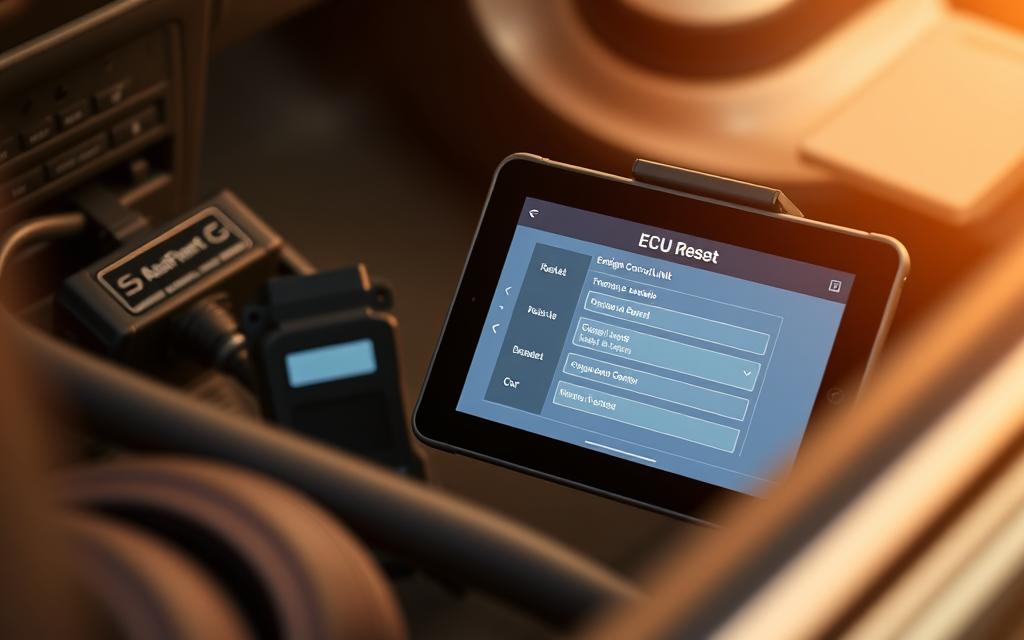
Using an OBD-II Scanner
An OBD-II scanner offers the most precise control over your vehicle’s electronic systems. These tools communicate directly with the ECU to clear error codes and reset adaptation values.
Top-rated scanners include:
- BlueDriver: Reads manufacturer-specific codes
- FIXD: Provides reset tutorials via smartphone app
- Autel MaxiCOM: Offers bidirectional control for advanced users
Most devices complete the process in under 30 seconds. Always verify all systems return to normal operation afterward.
Ignition Cycling and ECU Reset Buttons
Some manufacturers build reset sequences into their ignition systems. The Toyota 3-pedal method involves:
- Turning the key to “On” (not start)
- Pressing gas/brake/clutch pedals simultaneously for 45 seconds
- Waiting for dashboard lights to flash
Honda and Subaru often place physical reset buttons near the steering column. Consult your manual for location-specific instructions.
| Method | Time Required | Tools Needed | Effectiveness |
|---|---|---|---|
| OBD-II Scanner | 30 seconds | Diagnostic tool | Complete reset |
| Ignition Cycling | 1-2 minutes | None | Partial reset |
| Fuse Removal | 5 minutes | Pliers | ECU memory clear |
“Fuse-based resets work best for older models without sensitive anti-theft systems. Always check which circuit controls the ECU.”
For rapid capacitor discharge, some forums suggest briefly touching positive and negative cables together. This method risks short circuits and isn’t recommended for modern vehicles.
Conclusion
Maintaining your car’s electronic health requires careful attention. A proper reset ecu process ensures systems relearn optimal settings efficiently.
Most vehicles need 15+ minutes of disconnection time. Older models or complex issues may demand professional tools. Always prioritize safety—wear gloves and check terminals for corrosion.
Post-reset driving helps the ECU recalibrate. For persistent errors, consult a mechanic or use OBD-II scanners. Refer to manufacturer manuals for model-specific guidance.
Handling the battery correctly prevents damage. With these steps, your vehicle’s electronics will perform reliably.
FAQ
What does the ECU do in a car?
The Engine Control Unit (ECU) manages engine performance by adjusting fuel injection, ignition timing, and emissions. It ensures optimal efficiency and power output.
How does disconnecting the battery affect the ECU?
Cutting power erases temporary error codes and resets adaptive settings. However, some vehicles retain data due to residual power in capacitors.
What’s the minimum time needed to reset the ECU?
Most systems reset after 15–30 minutes, but some require 1–2 hours for a full reset. Older models may need longer.
Why might an ECU not reset immediately?
Factors like capacitor charge, hybrid systems, or aftermarket electronics can delay the process. Always check your vehicle’s manual.
Are there risks to disconnecting the battery?
Yes. You may lose radio presets, clock settings, or trigger anti-theft systems. Use an OBD-II scanner for safer resets.
Can I reset the ECU without disconnecting the battery?
Yes. OBD-II tools or ignition cycling (key turns) work for many models. Some cars have dedicated ECU reset buttons.
Will resetting the ECU improve performance?
It can clear error codes and restore factory settings, but driving habits and sensor recalibration determine long-term effects.


